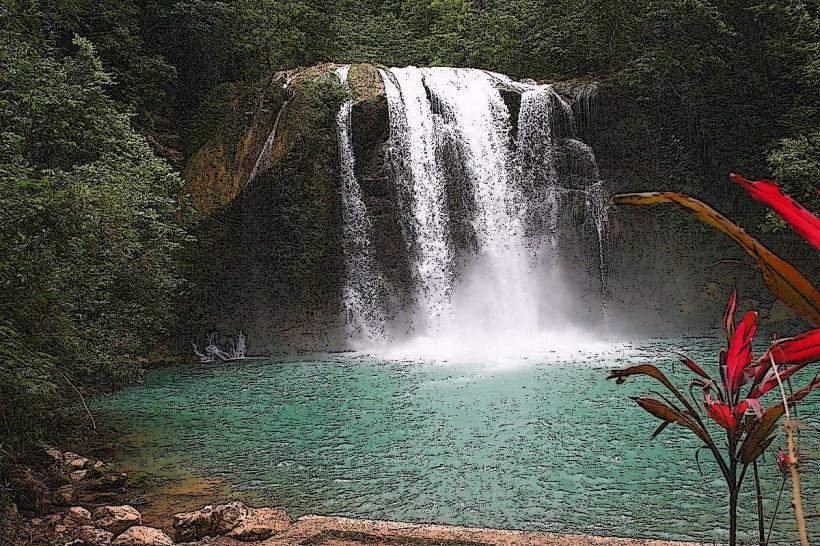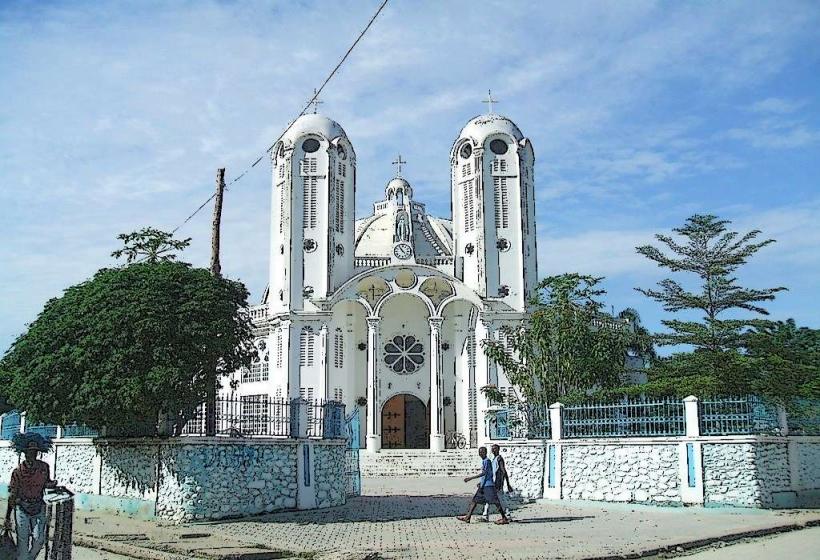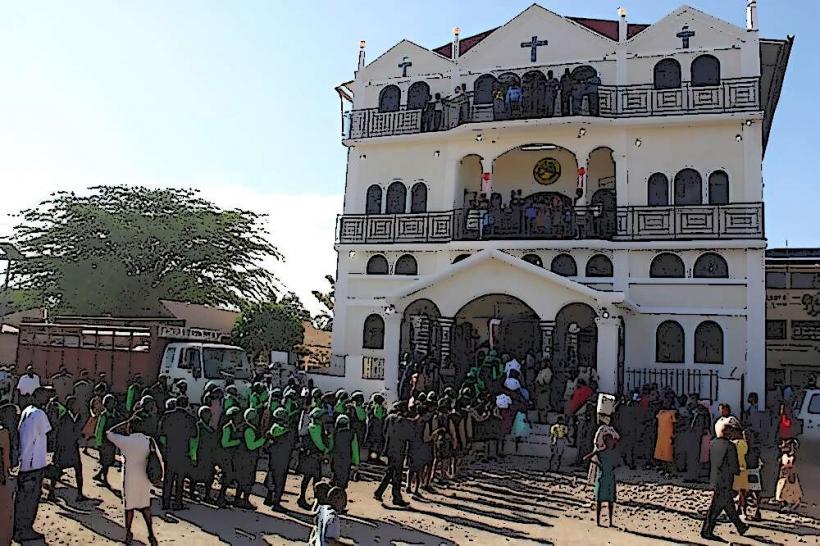Information
Landmark: Mont LachatreCity: Hinche
Country: Haiti
Continent: North America
Mont Lachatre is one of Haiti's prominent mountain peaks, located in the central region of the country, specifically in the Artibonite Department. The mountain is known for its striking elevation, natural beauty, and significance to the local environment and surrounding communities.
Geographic Location
Location: Mont Lachatre is located near the town of Gros-Morne in central Haiti, between the towns of Hinche and Gonaïves. It is part of the central mountain range, which is a significant geographical feature of Haiti. The mountain stands as one of the highest points in the region, offering panoramic views of the surrounding hills, valleys, and rivers.
Elevation: Mont Lachatre rises to an elevation of approximately 1,300 meters (4,265 feet) above sea level, making it one of the notable peaks in Haiti. Its high altitude contributes to its cool climate and offers a distinctive contrast to the tropical lowlands of Haiti.
Natural Significance
Ecological Importance: Mont Lachatre is part of the larger central plateau ecosystem and plays a crucial role in local biodiversity. The mountain is surrounded by forests and rich vegetation, which host various species of flora and fauna. The area is home to different types of trees, bushes, and wildlife, providing a habitat for both common and endangered species. The cool climate and lush greenery make it an important natural area for conservation efforts.
Hydrological Role: The mountain and its surrounding hills contribute to the local hydrology by acting as a watershed. Several rivers and streams in the region are fed by the waters flowing from the mountain, making it an essential source of freshwater for nearby communities, especially those in Gros-Morne and other towns in the Artibonite region.
Hiking and Outdoor Activities
Trekking and Hiking: Mont Lachatre is a popular destination for hikers and nature enthusiasts, offering scenic trails that lead up to the peak and around the surrounding areas. The hike to the summit is a rewarding experience, with visitors enjoying views of the surrounding mountain ranges, valleys, and agricultural land. The area’s cool climate makes it a comfortable place for outdoor activities, especially compared to the tropical heat found in other parts of Haiti.
Panoramic Views: From the summit of Mont Lachatre, visitors can enjoy breathtaking views of the surrounding landscape, including the town of Gros-Morne and the valley below. The sight of the lush hills and the distant peaks is a major attraction for those seeking to immerse themselves in Haiti’s natural beauty.
Cultural Significance
Local Communities: Mont Lachatre is deeply connected to the local communities in the central plateau. It is often a point of pride for the residents of nearby towns, such as Gros-Morne and Hinche, who rely on the mountain for both its natural resources and its cultural significance. The mountain is also a symbol of Haiti’s rugged, natural terrain, which has been integral to the country's history and identity.
Religious and Folkloric Importance: Like many mountains in Haiti, Mont Lachatre holds cultural significance in local folklore. In Haitian culture, mountains are often viewed as sacred places that carry spiritual energy and may be linked to religious or ancestral beliefs. The mountain's role in local spirituality and traditions is part of its broader importance to the people living in its shadow.
Environmental Challenges
Deforestation and Erosion: One of the primary environmental concerns surrounding Mont Lachatre, as with many areas in Haiti, is deforestation. The cutting down of trees for firewood, agriculture, and urban development has led to soil erosion and the degradation of the natural landscape. This has negatively impacted the mountain’s ability to maintain water quality and prevent landslides.
Conservation Efforts: Efforts to preserve the natural environment of Mont Lachatre and the surrounding region are ongoing. These include reforestation programs and the promotion of sustainable farming practices. The importance of maintaining the health of the mountain is crucial for both environmental stability and the well-being of the people who rely on it for water, agriculture, and livelihood.
Tourism Potential
Eco-Tourism: Mont Lachatre’s combination of scenic beauty, biodiversity, and outdoor activity opportunities makes it an ideal location for eco-tourism. Promoting sustainable tourism could provide an economic boost for the surrounding communities while simultaneously supporting conservation efforts. Trekking, birdwatching, and photography are just a few activities that could attract visitors who wish to experience Haiti's natural wonders.
Accessibility: Accessing Mont Lachatre can be challenging due to the rough terrain and lack of developed infrastructure in some parts of the central plateau. Roads leading to the mountain may be difficult, especially during the rainy season, but visitors willing to make the journey will be rewarded with stunning natural views and a deeper connection to Haiti’s rural landscapes.
Conclusion
Mont Lachatre is a significant natural and cultural landmark in Haiti, offering a combination of natural beauty, ecological importance, and cultural significance. It stands as a vital resource for the local communities in the Artibonite region, particularly with its role in providing freshwater and supporting agriculture. The mountain’s scenic hiking trails, rich biodiversity, and cultural relevance make it a valuable site for both local residents and visitors seeking to experience Haiti's natural heritage. However, like many areas in the country, it faces environmental challenges, including deforestation and soil erosion, making conservation efforts essential for its preservation.





